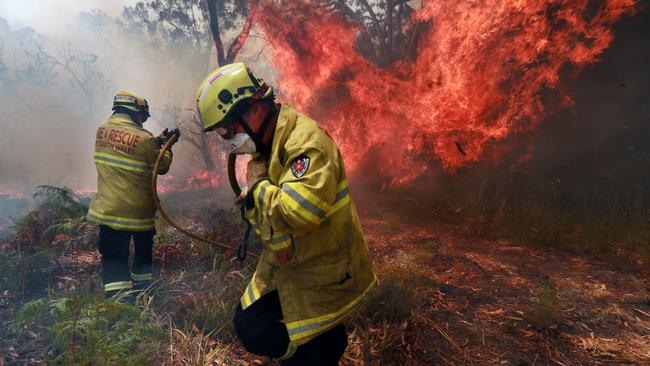‘Catastrophic Fire Danger’ warning for Sydney, Hunter on Tuesday
A Catastrophic Fire Danger warning has been issued for the greater Sydney and Hunter areas on Tuesday, which is shaping up to be a dangerous day for communities in at-risk areas across NSW. The Rural Fire Service issued this blunt warning today: ‘Lives will be at risk’.
NSW
Don't miss out on the headlines from NSW. Followed categories will be added to My News.
THE LATEST
Three dead, 40 injured
150+ homes destroyed
72 fires still burning across NSW
A Catastrophic Fire Danger warning has been issued for the greater Sydney and Hunter areas on Tuesday, which is shaping up to be a dangerous day for communities in at-risk areas across NSW.
The NSW Rural Fire Service issued this blunt warning today: ‘Lives will be at risk’.
Meanwhile Prime Minister Scott Morrison and NSW Premier Gladys Berejiklian have been told lives and homes in northern NSW areas already ravaged by bushfires will also be in danger again on Tuesday.
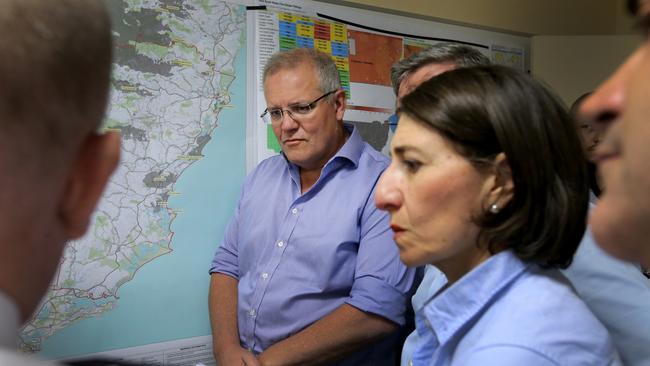
The dire warning was issued by firefighters desperately trying to control the devastating bushfires across NSW before a “danger day” of weather forecast for Tuesday.
As NSW begins to count the huge cost of the fires, three people have been confirmed dead while all those feared missing have been accounted for.
More than 150 properties have been lost to the fires.
Sydney and Hunter regions to experience Catastrophic fire danger on Tuesday. Many areas will face dangerous bush fire conditions. Based on latest forecasts, this is the expected fire danger ratings for Tuesday. Plan now. #nswrfs #nswfires #catastrophic pic.twitter.com/KC1oW72n2k
— NSW RFS (@NSWRFS) November 10, 2019
All three victims have now been named. They are Julie Fletcher, 63, who was discovered in a burnt-out home in the town of Johns River; Wytaliba resident Vivian Chaplain, 69; and George Nole, whose body was found in a burnt car near Glen Innes.
MORE
Hellfire’s toll: Fast-moving bushfires kill three
Blaze from hell was pure red evil
Miracle tales of survival against the odds
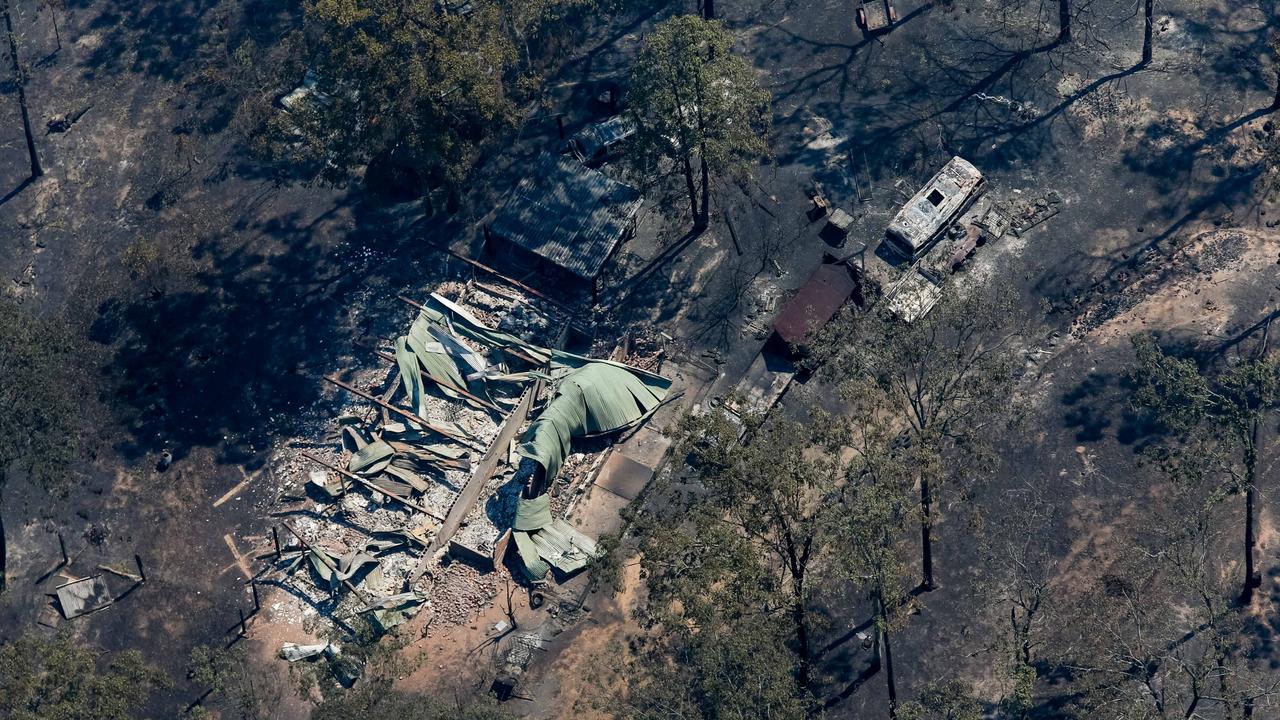
While conditions have eased today, firefighters are now desperately trying to control the bushfires and the RFS says Tuesday will likely see widespread severe and extreme fire danger from the Queensland border to the NSW south coast and across the NSW central west.
“Tuesday 12 November will be a dangerous day,” it tweeted. “With so many fires already burning, homes and lives will be at risk.”
If you live in an area where Catastrophic fire danger is forecast, avoid bush fire prone areas. This may mean moving to large towns or cities, or community facilities like shopping centres. Homes are not designed to withstand fire under these conditions. #nswrfs #nswfires
— NSW RFS (@NSWRFS) November 10, 2019
The federal and NSW leaders flew into the NSW mid north coast today to hear from firefighters and displaced residents near where Julie Fletcher was killed trying to flee a fire early Saturday morning.
Mr Morrison and Ms Berejiklian were told firefighters were exhausted but had another gruelling fight ahead of them.
Tuesday 12 November will be a dangerous day.
— NSW RFS (@NSWRFS) November 9, 2019
Widespread areas of Severe and Extreme fire danger.
With so many fires already burning, homes and lives will be at risk.
If you are threatened by fire, you may not get help.
Start taking action now.https://t.co/RQyA5UiGJX #nswrfs pic.twitter.com/8fRpurJzrx
For the past 67 days, there have been between 500 and 1500 firefighters on the ground every day and night.
“The local crews are very, very tired, completely fatigued, after working around the clock for months,” NSW Rural Fire Service Superintendent Kam Baker said.
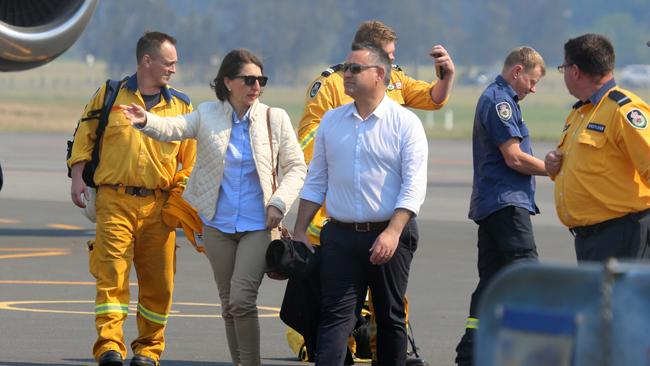
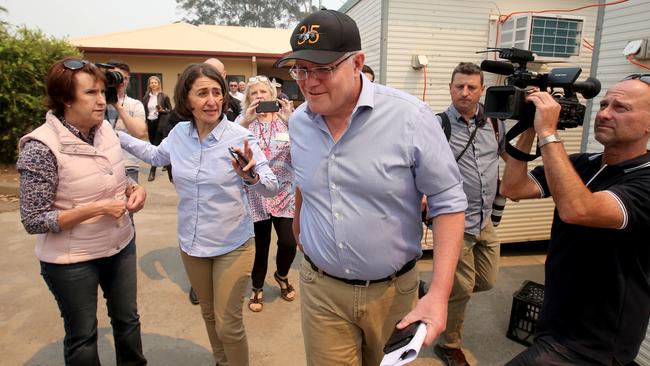
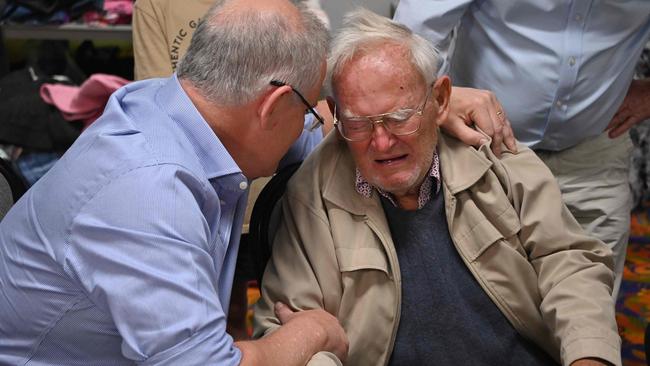
NSW Rural Fire Service fire behaviour analyst Simon Heemstra described the upcoming conditions as “very hot, very dry and very windy”.
“There will be another very severe day on Tuesday, which will impact lives and property.”
Tuesday’s fires are predicted to hit anywhere east or south east of Stockyard Flat, which includes the entire NSW coast from Port Macquarie to Forster.
Residents are bunkering down in beachside Port Macquarie, where the two major roads in and out have been cut off by fires, and an “eerie” silence has fallen.
Dawn Marchment, who runs the NRMA Port Macquarie Breakwall Holiday Park, said there had been an influx of residents from the hinterland late last week as the sky turned orange and smoke blanketed the town.
“We had a lot of locals who were told to grab what they can and leave — they were devastated,” she told The Daily Telegraph.
“They headed back to their homes to grab what they could or prepare to fight the next fire after they were allowed to return.”
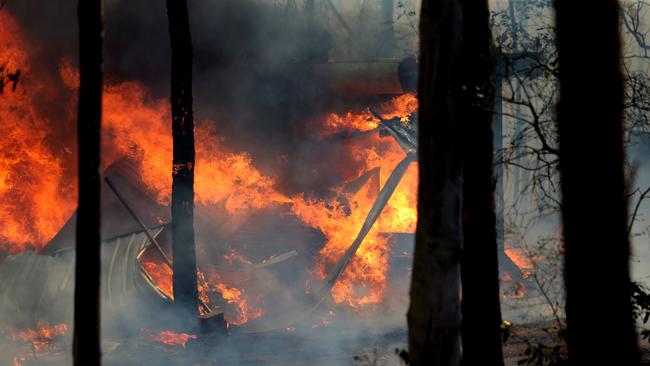
The fires are continuing to burn in the mountains with vast swathes of inaccessible bushland going up in smoke on Sunday afternoon.
From the air the whole region is dotted by spotfires in marshlands and even at the end of the airport runway.
“Now they’re not telling people to come in,” Ms Marchment said. “There are only two roads in and out — they don’t want to gridlock us.”
Ms Marchment said the caravan park was largely empty on Sunday and the town was becoming “eerily quiet”.
The majority of people remaining, she said, were holiday makers unable to travel south because massive infernos had cut off the main highway.
Ms Marchment said she and her guests, many of whom were older, were worried about Tuesday’s hot and windy predicted weather.
“We are trying to keep people calm,” she said. “We’ve heard it could get so bad the fireys won’t be able to get to everyone.”
Smoke haze from fires in the North East of #NSW are travelling across the Tasman Sea & over the Pacific Ocean. High to Very High fire danger in the North East of #NSW today. For the latest updates visit https://t.co/SPHgGeisGZ & #NSWRFS pic.twitter.com/rXIUdDGYd8
— Bureau of Meteorology, New South Wales (@BOM_NSW) November 9, 2019
Meanwhile the RFS have concerns about people who live in remote homes in mobile phone blacks spots are may be unable to call for help if fires approach.
“There are places where communications are limited or even non-existent,” NSW RFS Commissioner Shane Fitzsimmons said. “We have mobile equipment — basically portable (reception) cells on wheels — but any given day we don’t know exactly where the fires will be and where to position them.”
On Sunday morning, 72 fires were burning across NSW, 36 of which were not under control.
Eleven fires remain at a watch and act level.
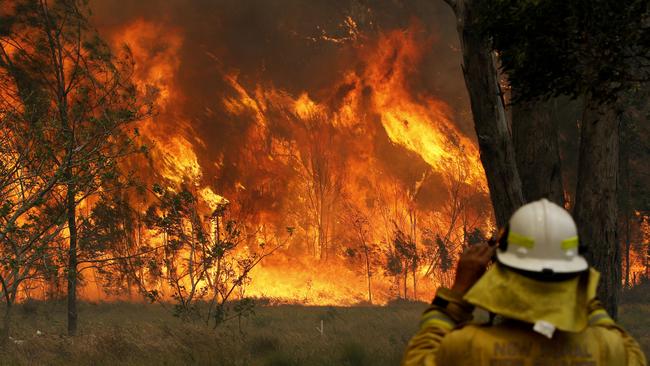
RFS Inspector Ben Shepherd said fire crews were doing all they could to control blazes already burning before Tuesday.
“We are looking down the barrel of a busy few days and potentially a dangerous day come Tuesday,” he told Seven News on Sunday.
“We’re trying to get as many of these fires under control before the onset of that weather on Tuesday but, look, we won’t have these fires under control by that stage. We’ll have to concentrate where it is burning close to residential areas.”
NSW Rural Fire Service fire behaviour analyst Simon Heemstra described the upcoming conditions as “very hot, very dry and very windy”.
“The three are lining up on Tuesday for potentially significant fire weather,” he said.
In the meantime RFS Commissioner Fitzsimmons said assessment teams were bracing themselves for “considerable losses”.
“There are communities and fire grounds where we are expecting to tally up considerable losses of homes and other properties,” he said.
“A number of our own fire stations have been destroyed.”
At least 150 homes have been destroyed by the fires although this number is likely to climb as detailed assessments begin.
Mr Fitzsimmons said other important community assets had also been lost in the fires.
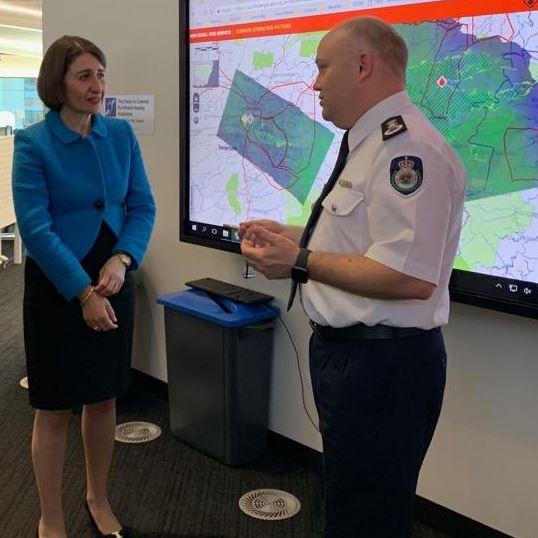
“We’re talking about schools being destroyed, we’re talking about community halls, bridges, power poles,” he said.
“All of those sorts of things — they get consumed in the path of a volatile fast-moving fire.”
Fire assessment teams would comb through devastated areas over the coming days, Mr Fitzsimmons said.
“The more forensic process of getting in and doing the detailed assessments will come over coming days.
“Clearly, from what we are seeing, and we do not have indicative assessments from all these fire grounds yet, but estimates are at least 150.”
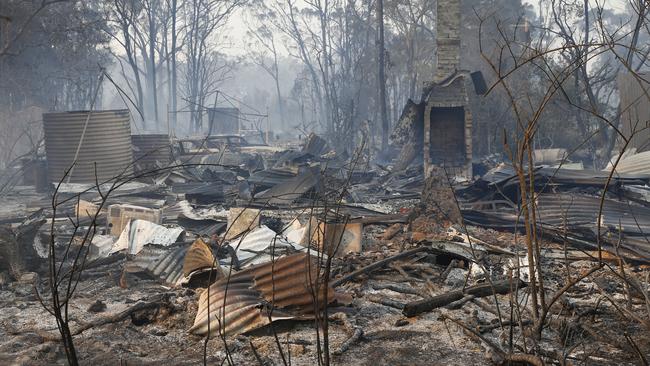
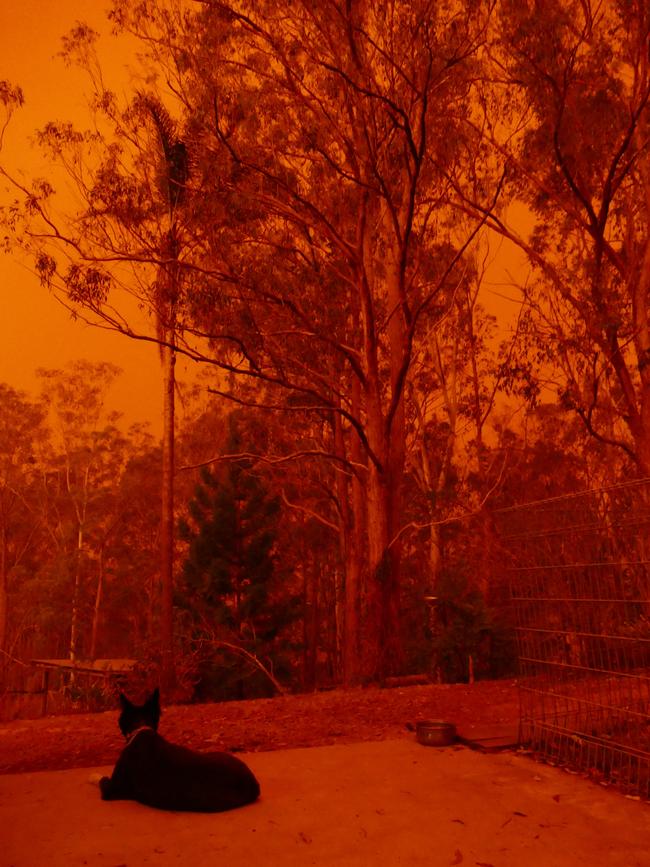
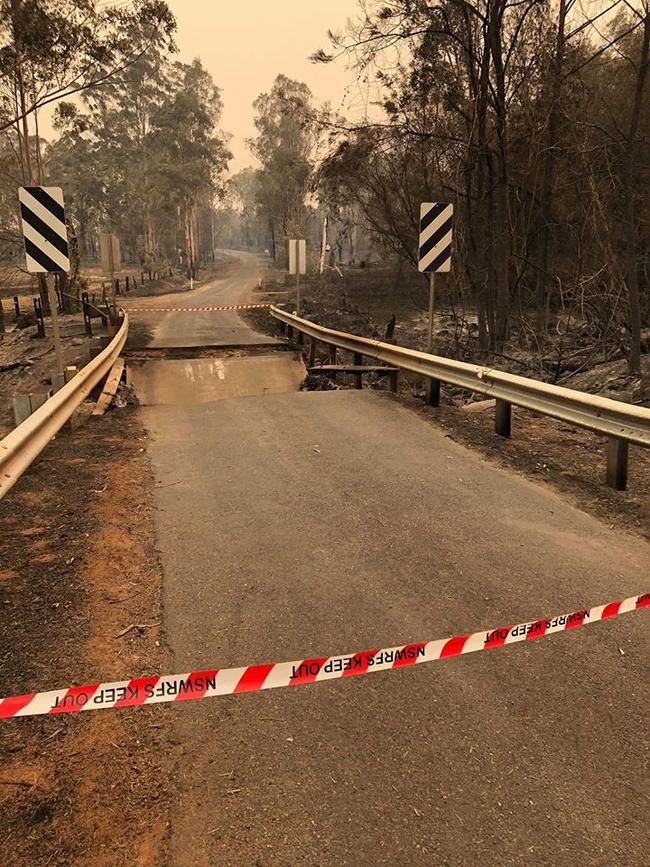
Premier Berejiklian said South Australia, Tasmania and Victoria were all sending reinforcements to help the state fight fires.
She said the federal and NSW governments had moved to put disaster relief arrangements in place.
“I want to assure communities throughout the mid and north coast no matter in which way they’ve been impacted, we know for some people they’ve lost everything, for some people they’ve lost a loved one … no matter what anyone’s circumstances, please know we’re here to support you,” Ms Berejiklian told Seven News.
About 2000 people have used the more than 15 formal evacuation centres set up.

